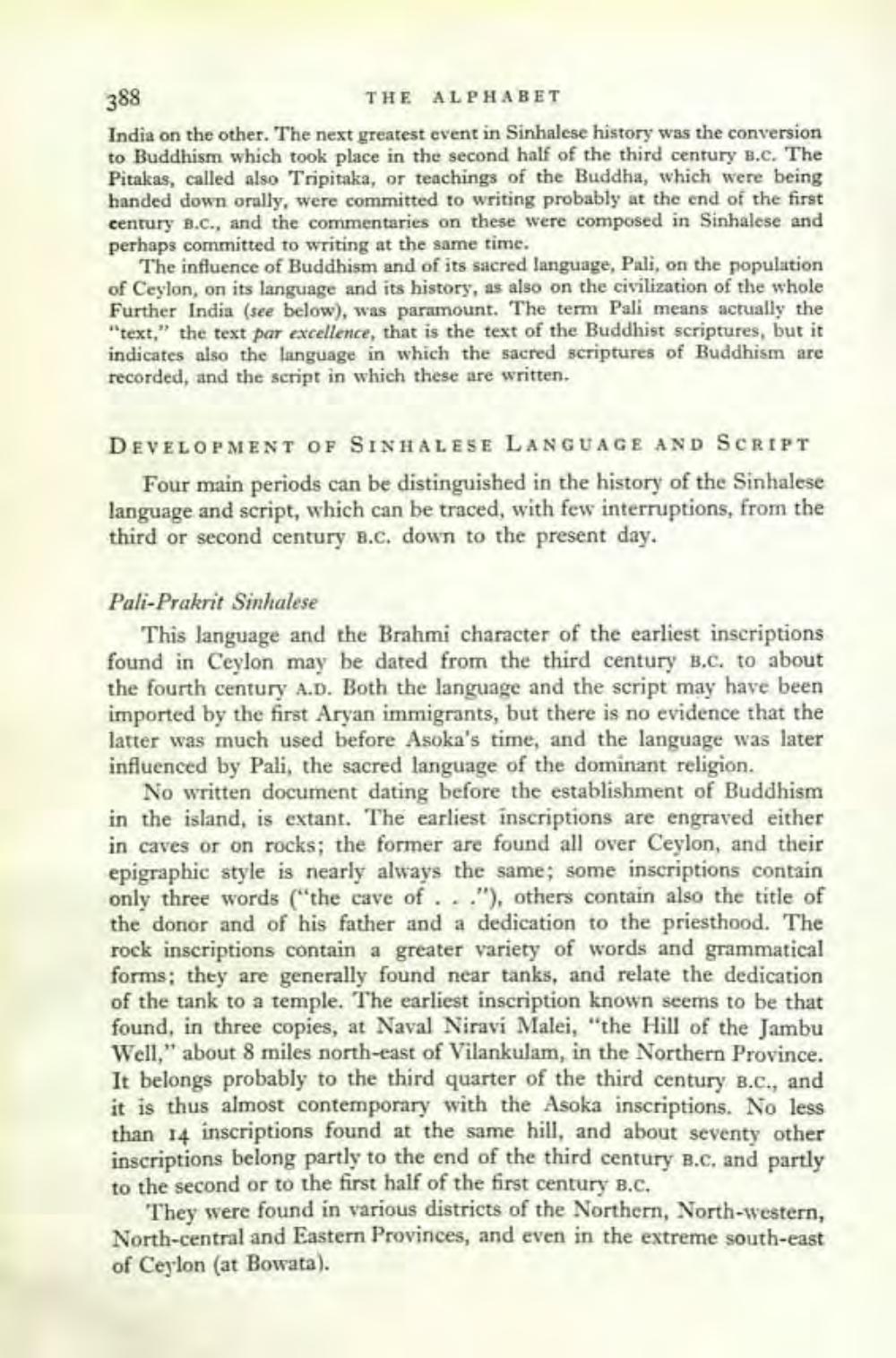________________
388
THE ALPHABET
India on the other. The next greatest event in Sinhalese history was the conversion to Buddhism which took place in the second half of the third century B.C. The Pitakas, called also Tripitaka, or teachings of the Buddha, which were being handed down orally, were committed to writing probably at the end of the first century B.C., and the commentaries on these were composed in Sinhalese and perhaps committed to writing at the same time.
The influence of Buddhism and of its sacred language, Pali, on the population of Ceylon, on its language and its history, as also on the civilization of the whole Further India (see below), was paramount. The term Pali means actually the "text," the text par excellence, that is the text of the Buddhist scriptures, but it indicates also the language in which the sacred scriptures of Buddhism are recorded, and the script in which these are written.
DEVELOPMENT OF SINHALESE LANGUAGE AND SCRIPT
Four main periods can be distinguished in the history of the Sinhalese language and script, which can be traced, with few interruptions, from the third or second century B.C. down to the present day.
Pali-Prakrit Sinhalese
This language and the Brahmi character of the earliest inscriptions found in Ceylon may be dated from the third century B.C. to about the fourth century A.D. Both the language and the script may have been imported by the first Aryan immigrants, but there is no evidence that the latter was much used before Asoka's time, and the language was later influenced by Pali, the sacred language of the dominant religion.
No written document dating before the establishment of Buddhism in the island, is extant. The earliest inscriptions are engraved either in caves or on rocks; the former are found all over Ceylon, and their epigraphic style is nearly always the same; some inscriptions contain only three words ("the cave of..."), others contain also the title of the donor and of his father and a dedication to the priesthood. The rock inscriptions contain a greater variety of words and grammatical forms; they are generally found near tanks, and relate the dedication of the tank to a temple. The earliest inscription known seems to be that found, in three copies, at Naval Niravi Malei, "the Hill of the Jambu Well," about 8 miles north-east of Vilankulam, in the Northern Province. It belongs probably to the third quarter of the third century B.C., and it is thus almost contemporary with the Asoka inscriptions. No less than 14 inscriptions found at the same hill, and about seventy other inscriptions belong partly to the end of the third century B.C. and partly to the second or to the first half of the first century B.C.
They were found in various districts of the Northern, North-western, North-central and Eastern Provinces, and even in the extreme south-east of Ceylon (at Bowata).




